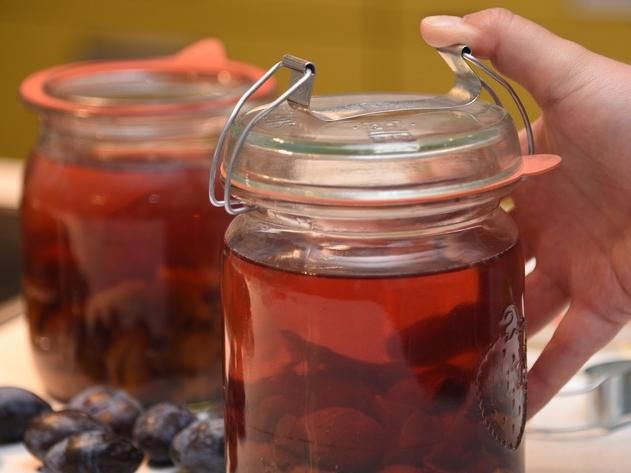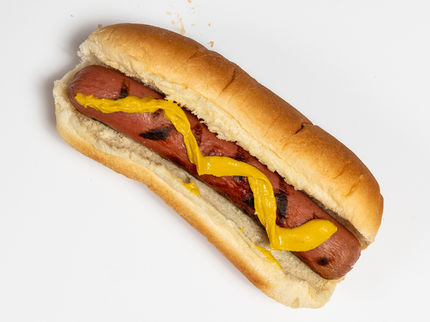Preserving, pickling and fermenting: How fruits and vegetables keep for a long time
Food waste prevention
Advertisement
The supply of fresh fruit and vegetables is particularly large in summer. But fresh food can also be preserved at home all year round by canning, pickling or fermenting. This is easy on the household budget and avoids food waste.

TÜV SÜD provides tips on preserving, pickling and fermenting fruit and vegetables.
TÜV SÜD AG
Preserving, pickling and fermenting are classic methods of enjoying seasonal foods not only during harvest time. If they had fallen into oblivion since the 1950s, they are now back in vogue. It's not just about food storage, but also about sustainability, waste reduction and culinary lifestyle.
Preserving
Canning is a physical method of preserving food by heating and hermetically sealing it. It involves either heating the preserved food in a pot and filling it hot into clean jars (a popular method for jams, here simple twist-off jars will do) or placing pre-filled preserving jars in water in the pot and heating them. In this case, wire hangers or clips and the lid sealed with rubber ring work like a pressure relief valve. They seal the jar airtight by negative pressure as it cools, so that no more bacteria or fungal spores can get in. By the way, canning jars can also be heated in the oven instead of in a water bath.
It is important to work cleanly: The jars should be rinsed very hot or sterilized with boiling water beforehand to destroy any possible bacteria. The preserves must not have any pressure marks or damaged areas, as this will affect their shelf life. Fruit, vegetables, mushrooms or even meat are suitable for canning. Even cakes can be baked and preserved in canning jars. Apples and blueberries have a high pectin content and require significantly less sugar for canning. Stored in a cool, dark place, preserves will keep for several months to years. If, after a long period of storage, the lid is only loosely fitted or is dented, fermentation gases have formed or an unpleasant odor has developed, then the preserves have spoiled.
Preserving
Unlike canning, this method preserves food by placing it in vinegar, oil, honey or alcohol. This blocks the microorganisms that cause food to spoil. Twist-off jars or earthenware pots are most suitable for pickling in vinegar-sugar solution. On the other hand, do not use jars and utensils made of aluminum, copper or brass, because the acid dissolves harmful heavy metals that can pass into the food.
Pickled food in vinegar-sugar solution can be kept for three to twelve months, depending on the vinegar concentration. If mold forms or the pickled food ferments, the contents have become inedible. In addition to the classic pickled cucumbers, many other vegetables are suitable for pickling in vinegar. Fish and mushrooms are pickled in oil. Honey can be used to preserve fruits and nuts in particular.
Fermenting
As a natural method of preservation, fermentation is not only suitable for cabbage, sourdough or dairy products. Vegetables and herbs are also suitable. Unlike canning, which largely kills the bacteria in the jar, fermenting specifically uses nutrients, enzymes and bacteria from the original food for preservation. In this way, many nutrients are still contained in the food at the end, which, for example, support a balanced bacterial world in the human intestine. In principle, all types of vegetables are suitable. This method is not suitable for fruit, as its high sugar content would lead to alcoholic fermentation.
In connection with the preservation of food, the term fermenting means fermentation, for example by lactic acid bacteria. This method is very old and can be traced back to archaeological sites. Lactic acid fermentation lowers the pH value in the food. Microorganisms cannot grow as well in an acidic environment, and the food is thus preserved. Lactic fermented vegetables are particularly digestible. Whereas in the past fermentation was initiated by fermentation germs from the environment, today the process can be simplified by the targeted addition of cultures. Depending on the type of vegetable, fermentation takes fourteen days to six weeks, after which a pH of 3.8 to 4.2 is reached. The fermentation process stops automatically at this low pH, but can also be terminated by heating to 80 degrees Celsius for a short time. Canning jars are suitable for pickling small portions of vegetables; traditionally, fermentation pots made of clay are used for the fermentation process.
Caution: The following applies to all forms of home preservation: If the lid no longer closes or is swollen, fermentation gases have formed or an unpleasant odor has arisen, then the preserved food has spoiled.
Note: This article has been translated using a computer system without human intervention. LUMITOS offers these automatic translations to present a wider range of current news. Since this article has been translated with automatic translation, it is possible that it contains errors in vocabulary, syntax or grammar. The original article in German can be found here.




























































